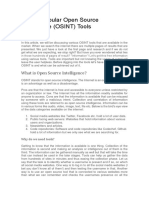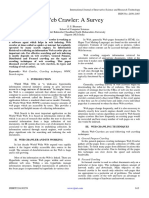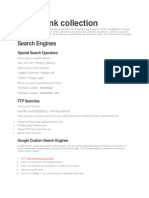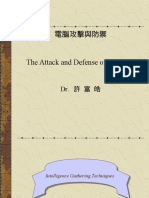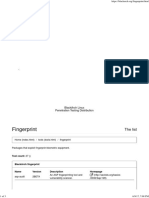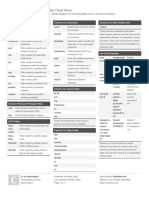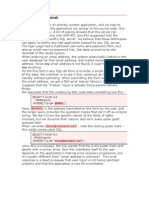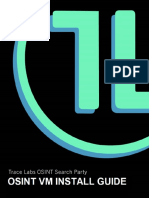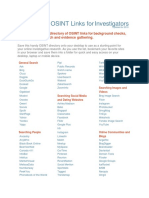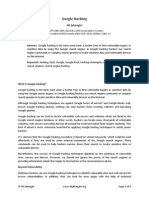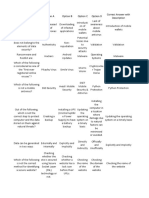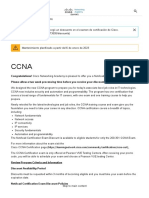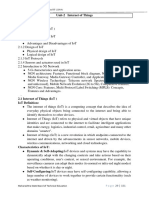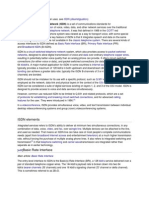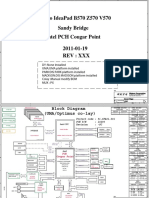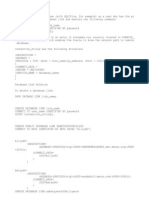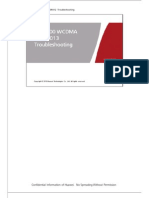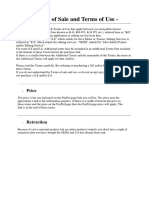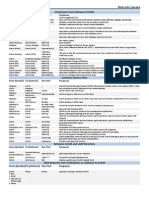OSINT
OPEN-SOURCE
INTELLIGENCE OSINT
Offensive OSINT
* 1
� Whoami
• Adam Nurudini
CEH, ITIL V3, CCNA, CCNP, CASP, PCI-DSS, BSC-IT
Lead Security Researcher @ Netwatch Technologies
Project Consultant, Information Security Architects Ltd
Member, Cybersecurity Resilience Service Team
Web Application Penetration Tester
President – GIMPA School Of Technology Student Association
* 2
�DISCLAIMER
Any Views or opinions presented in this presentation are solely mine and do not
necessarily represent my employer.
▪I am not a lawyer or giving you legal advice
▪I am not giving you permission or authorizing you to do anything ever.
▪In fact don't do anything ever .
* 3
�* 4
� TakeAway
s
• What is OSINT
• Collect data indirectly without knowing other information
• Collect data about servers, location, operating systems, etc.
• Threat intelligence for your organization
• Data gathering that could protect you and your company
• Skills of GHDB
• Shodan methods and operations
• OSINT using free tools only
* 5
� OSINT
Open-Source Intelligence (OSINT) is intelligence collected from public
available sources
“Open” refers overt, public available sources (as opposed to covert
sources)
Its not related to open-source software or public intelligence
This information comes from a variety of sources, including the social
media pages of your company and staff. These can be a goldmine of
information, revealing information such as the design of ID badges,
layout of the buildings and software used on internal systems.
Source: https://en.wikipedia.org/wiki/Open-source_intelligence
* 6
�Open-Source Intelligence (OSINT)
Fields and Sectors where OSINT is mostly required.
Government, Finance, Telecom, Critical Infrastructure, Cyber Security Advisory
Firms, Cyber Threat Intelligence Teams, Law, Cyber Forensic Teams and etc.
TYPES OF OSINT
From Security perspective we can separate OSINT into:
•Offensive: Gathering information before an attack
•Defensive: Learning about attacks against the company.
The OSINT gives opportunities to both the defender and attacker; you can learn
the weakness of a company and fix it while at the same time the weakness could
be exploited.
* 7
�The OSINT Process
* 8
�OSINT - What information to look
1. Technology infrastructure
IP, Hostname, Services, Networks, Software / hardware versions and OS
information, Geo-location and Network diagrams.
2. Database
Documents, papers, presentations, spreadsheets and configuration files
3. Metadata
Email and employee search (name and other personal information)
* 9
�Offensive OSINT – End goals
The information above can lead to the following cyber attacks:
1. Social Engineering
2. Denial of Service
3. Password brute force attacks
4. Target infiltration
5. User accounts take over
6. Identity theft
7. Data theft
* 10
�Brace your self demo is starting
*
Everybody is interested in something 11
�Offensive OSINT – Resources and tools
1. OSINT Search Engines
Attackers rely on these OSINT search engines to conduct passive reconnaissance.
• Google - https://google.com
• Shodan - https://shodan.io
• Censys - https://censys.io
• Fofa - https://fofa.so
• Dogpile - http://www.dogpile.com
• Archives - https://archive.org/
* 12
�Offensive OSINT – Resources and tools
2. Email Harvesting
Harvesting email address is an OSINT technique that gives attackers more information
to conduct attacks such as password stuffing and social engineering attacks.
Theharvester
https://github.com/laramies/theHarvester
Prowl
https://github.com/nettitude/prowl
Haveibeenpawned -
https://haveibeenpwned.com/
* 13
�Offensive OSINT – Resources and tools
3. Google Hacking Database (GHDB)
The GHDB is an index of search queries (we call them dorks) used to find publicly
available information. Dorks - https://www.exploit-db.com
* 14
�Offensive OSINT – Resources and tools
3. DNS / Subdomain Enumeration
Subdomain enumeration is the process of finding valid (resolvable) subdomains for one
or more domain(s).
Having unsecured subdomain can lead to serious risk to your business.
Tools for subdomain enumeration
Aquatone - https://github.com/michenriksen/aquatone
Sublister - https://github.com/aboul3la/Sublist3r
DNS dumpster - https://dnsdumpster.com/
Facebook - https://developers.facebook.com/tools/ct
* 15
� OSINT is important and still gets overlooked by
attackers and defenders
I hope that you found this talk useful
References
https://www.slideshare.net
https://resources.infosecinstitute.com
https://google.com
https://www.exploit-db.com
https://www.wikipedia.org/
* 16
� Thank You
Questions & Answers
Lets connect
Twitter: @Bra__Qwesi
Email: adam.nurudini@st.gimpa.edu.gh
* 17





